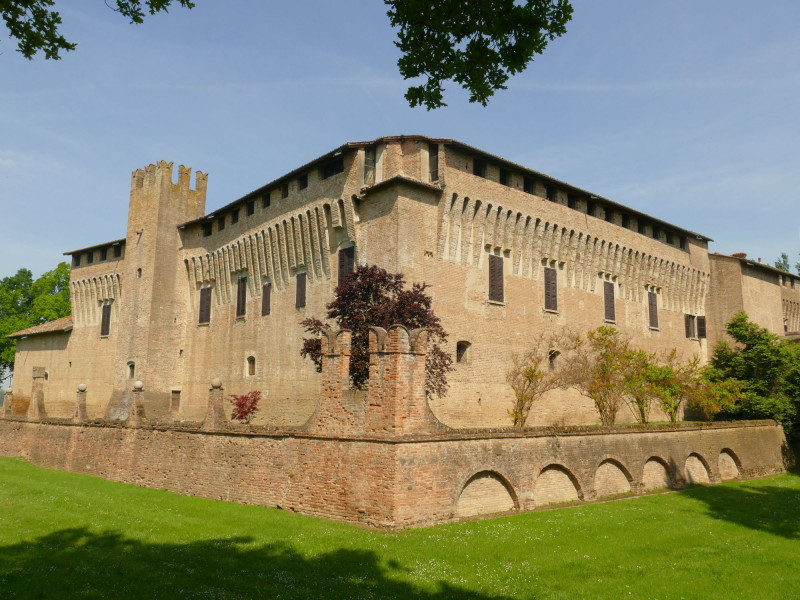
Here you can
Begin your e-bike tour
Choose one of the routes on the right in order to pass by this point
Book your ebikesCastle of Maccastorna: what's to know
The castle of Maccastorna, in the commune of the same name in lower Lodi that today has 64 souls, is a significant architectural example of the feudal era and a symbol of the struggles for the government of the territory between the thirteenth and fourteenth centuries. It still retains its severe defensive character, despite the interventions of adaptation and transformation in the following centuries; its location was strategic for the control of the river Adda and the border of the territory of Lodi with Cremona. The Ghibellines lived there for many years and the Guelphs took it and massacred all the residents.
The castle of Maccastorna, which still retains its severe appearance of a thirteenth-century manor, was built on the foundations of an ancient stronghold, Belpavone or Mancasturma built around 1250 by the Ghibellines banished from Cremona. In the following years the castle was conquered by the hostile faction of the Guelphs, who invaded it, slaughtering the inhabitants and destroying most of them. In 1371 the castle was acquired by Gian Galeazzo Visconti, first duke of Milan, who in 1385 donated it, along with the entire village, to Guglielmo Bevilacqua for the services offered against his uncle Bernabò Visconti. In the fifteenth century the architectural complex, together with the feud of Maccastorna, passed into the hands of Cabrino Fondulo, leader in the service of the Cavalcabò Cremona lords. He settled in the manor and made important changes: he built the walls, built the moat with a drawbridge and made some spaces into prisons. On 24 July 1406 he lavishly hosted Andreasio, Antonio and Carlo Cavalcabò, lord of Cremona. Here, in the night, Cabrino Fondulo with the help of his minions, slit the guests' throats and threw their bodies into the Well of the bounties, proclaiming himself lord of Cremona. Since then it is said that in the halls of the castle still echo the cries of the dead and wander seventy ghosts. Other mournful events marked the history of the castle that remained the property of the Veronese family of Bevilacqua until 1901, when the property was ceded.
from https://www.lombardiabeniculturali.it/architetture/schede/LO620-00041/





 Castle of Maccastorna
Castle of Maccastorna 

